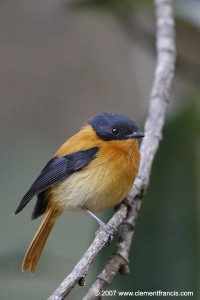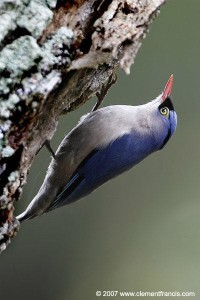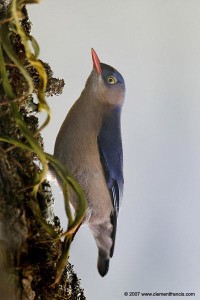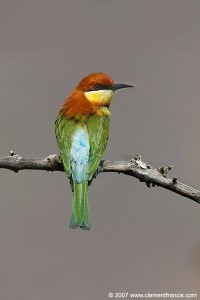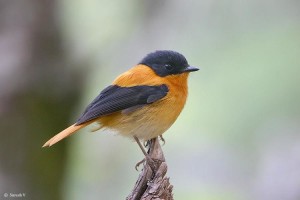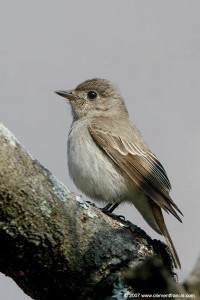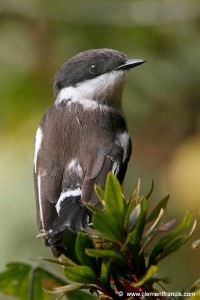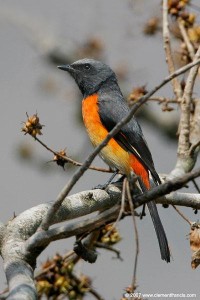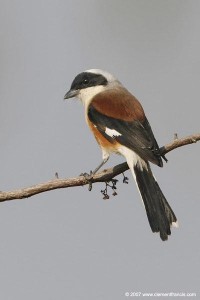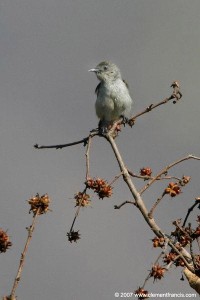Bored being amidst the hustling and bustling city of Bangalore, we just wanted to head towards the cooler and much relaxed town of Ooty for the weekend (March 10 & 11, 2007). So we booked ourselves at the King’s Cliff Hotel (www.kingscliff-ooty.com). Suresh & I have been visiting Ooty and the surrounding area for the last 3 years at this particular time as we have been very successful in photographing the Western Ghat endemics that Ooty has to offer.
The over crowded, picnic paradise Ooty hosts great numbers of the endemics to name a few – the Nilgiri Flycatcher, Black & Orange Flycatcher, White-bellied Shortwing, Nilgiri Laughing thrush, Nilgiri Woodpigeon, Nilgiri Pipit etc. Also hosts many migratory small birds as well which are altitude dependant and also habitat specific like the Indian Blue Robin, Tickell’s Warbler, and Kashmir Flycatcher.
We left Bangalore at around 3AM on Saturday (10th March 2007), drove straight to Bandipur to enjoy the morning sun and the photo opportunities that will be presented there on the road to Ooty. Bandipur was just dry and life less, the only chirps that we heard were of the Yellowthroated sparrows or Chestnut Shouldered Petronia and one single Roller perched with puffed up feathers as the morning was foggy and very cold there. The Roller presented us with some good pictures and the car acted as a good hide to get close. There were more bird activity on the Mudumalai and Theppakad range and we spotted many Bay-backed shrikes, Plum headed parakeets, Shikras, a lone Tawny eagle, Bee-eaters, Brahminy Mynas and Woodpeckers. Our experience reminded us that the Chestnut headed Bee-eaters of Kalhatty Ghat will be in full song, what I mean here is the breeding plumages. We headed to the ghats and found around 30 or more Bee-eaters doing their act of insect catching. Most of you know their acrobatic life style when it comes to capturing insects in mid air. Parking the car on the narrow road was difficult so we photographed mostly from the car and in places where there was an empty space we parked our car and photographed these winged beauties. A lone brown flycatcher also came in to the scene and presented us with some good poses. Also that place had large wood shrikes, small minivets in good numbers, a lone Plain Flowerpecker, a pair of Black Eagles flying in the valley, many Red-whiskered & Red-vented Bulbuls, Leaf birds, Ioras and White-eyes. Our target species here was the Bee-eaters so we remained with them for around 90 minutes.
From the Kalhatty Ghats we headed straight to Kings Cliff and after a great lunch we headed towards the Elk Hill area, which is adjacent to the famous Sullivan’s Court Hotel. The tea gardens and eucalyptus grove along with some fern trees and shrubs there have always produced great flycatcher sightings for us in the years gone by. We love this area because it is people-free and one can photograph and bird-watch here without much disturbance. Within 15 minutes of our arrival there and once we assembled the camera gear which is more pain most times due to its bulk (10Kg), we heard the Black & Orange Flycatchers and Nilgiri Flycatcher calling. We headed in the direction of their calls and there we were presented with some great opportunities to photograph these mountain jewels. Suresh and I kept a distance of 200 feet or more between us.
This time around both the flycatchers were in love with Suresh and they posed for him time and again and our man was clicking away to glory. He was almost speech less after the first session was over around 5PM that evening. It was almost dream come true for both of us as we have never experienced this kind of photo shoot at Nilgiris in all our trips there which ranged for few years now. The digital equipment is nothing but a god-send to nature photographers which helped us to shoot even in low light and the 5 frames per second speeds offered by the Canon 30D helped us to capture the fast movers like the Velvet-fronted Nuthatch as well in decent light and with decent clarity. Once the sun went down we headed towards the hotel and after a few drinks slept like logs after a tiring day in the field. The food, ambience and hospitality at Kings Cliff just rocks. I would encourage any nature lover to visit this place and enjoy the stay there.
Due to the success of the previous day’s photo session we headed to the same area the next morning as well and the beauties of the previous day were still hanging around in the same area and we made even better pictures of the flycatchers and a surprise visitor to that area which we did not see the previous evening, the Pied Flycatcher Shrike or the Bar-winged Flycatcher Shrike also landed close to us and allowed us to click a few pictures. A very friendly Orange-headed Ground thrush also was seen there digging the loose soil for earth worms. There were also many Eurasian Blackbirds & scores of White-eyes seen flying around. We photographed there from 7AM until 1000AM and drove back to Bangalore. The traffic was sick on Mysore road so it almost took us 8 Hrs to reach home.
Due to the ever growing population and the tourism industry the forest cover of Ooty and in-fact the whole Nilgiris is vanishing at a very fast pace. There has been efforts by locals and few NGOs like Save Nilgiris Foundation to save this biodiversity hotspot, let us join hands with them to protect this haven for birds. Also when ever we visit this natural wonder, let us behave responsibly to maintain the cleanliness and sanctity of the region.
Hope all of you enjoyed the journey with us and we hope this bulletin will encourage everyone to involve in some way or the other in conservation efforts to save our natural wealth.



